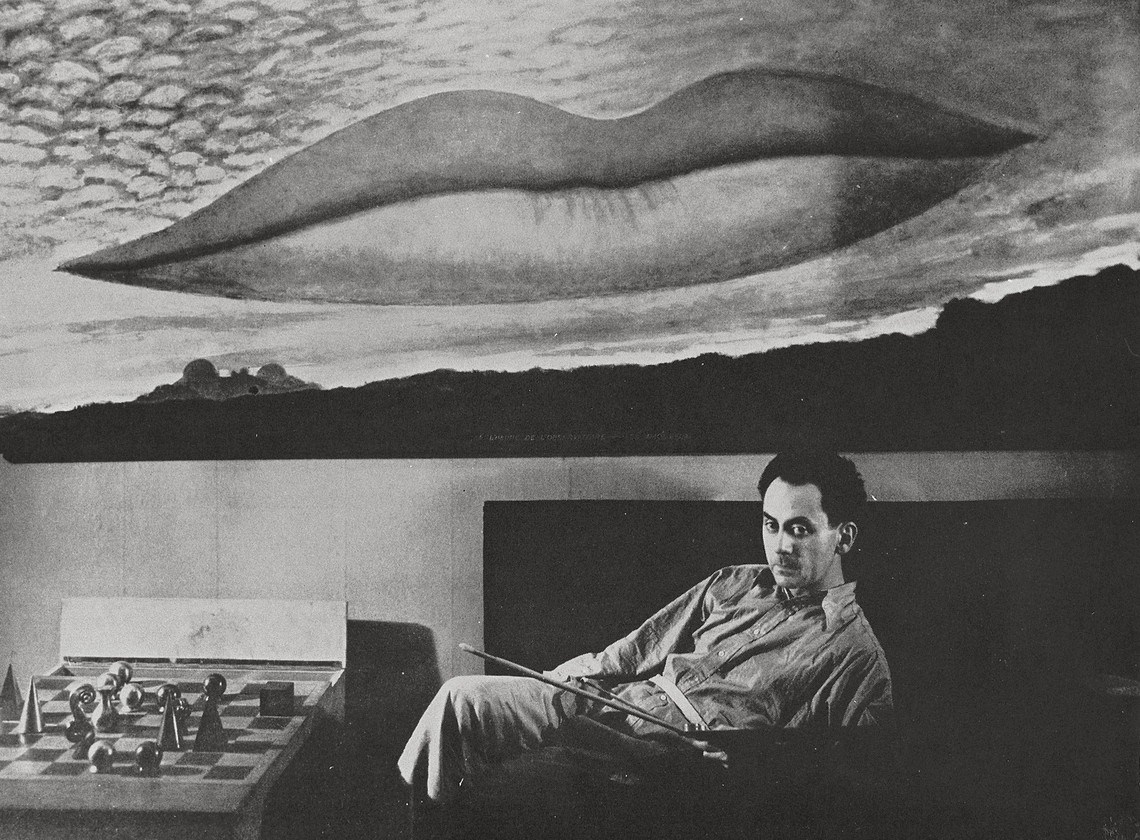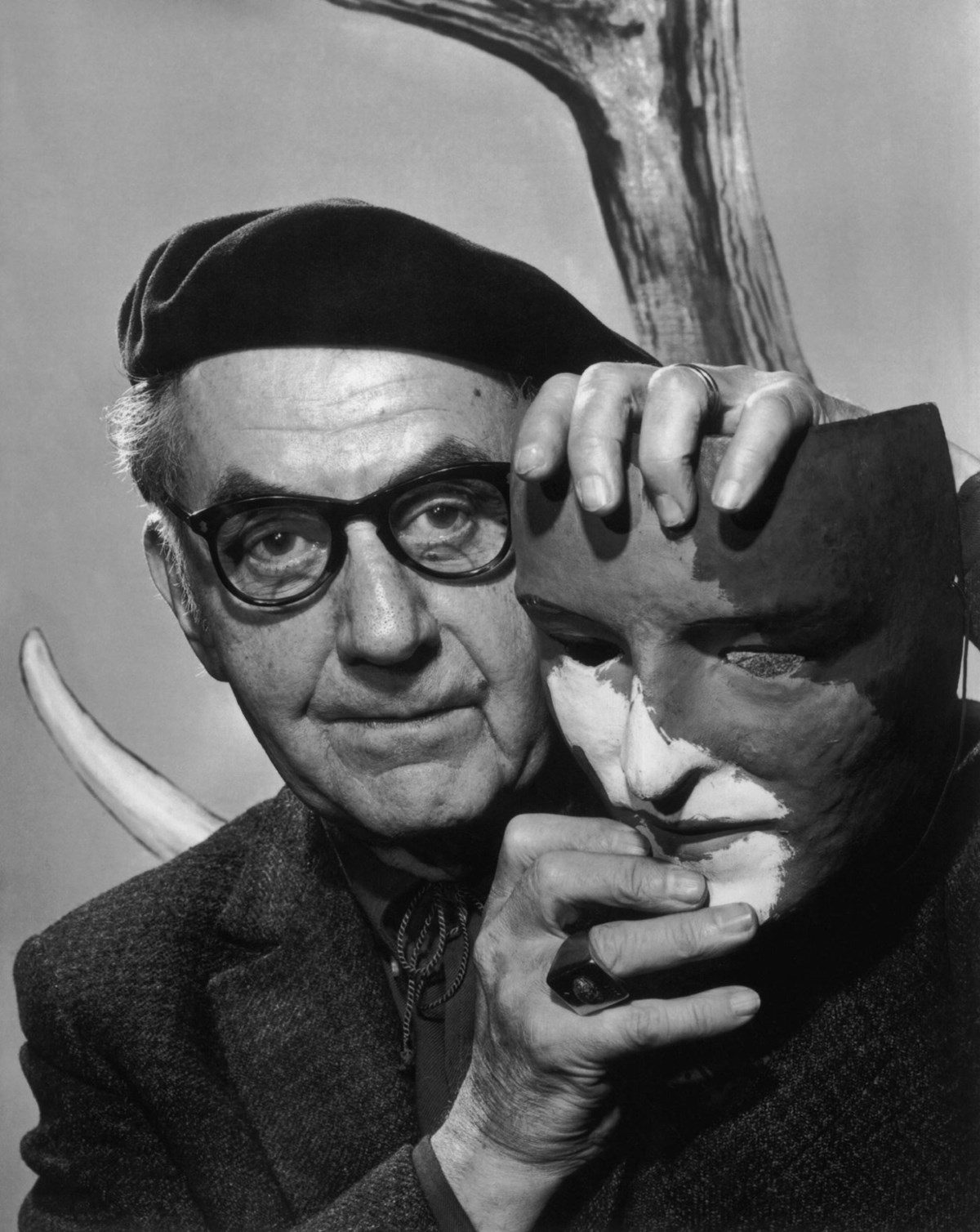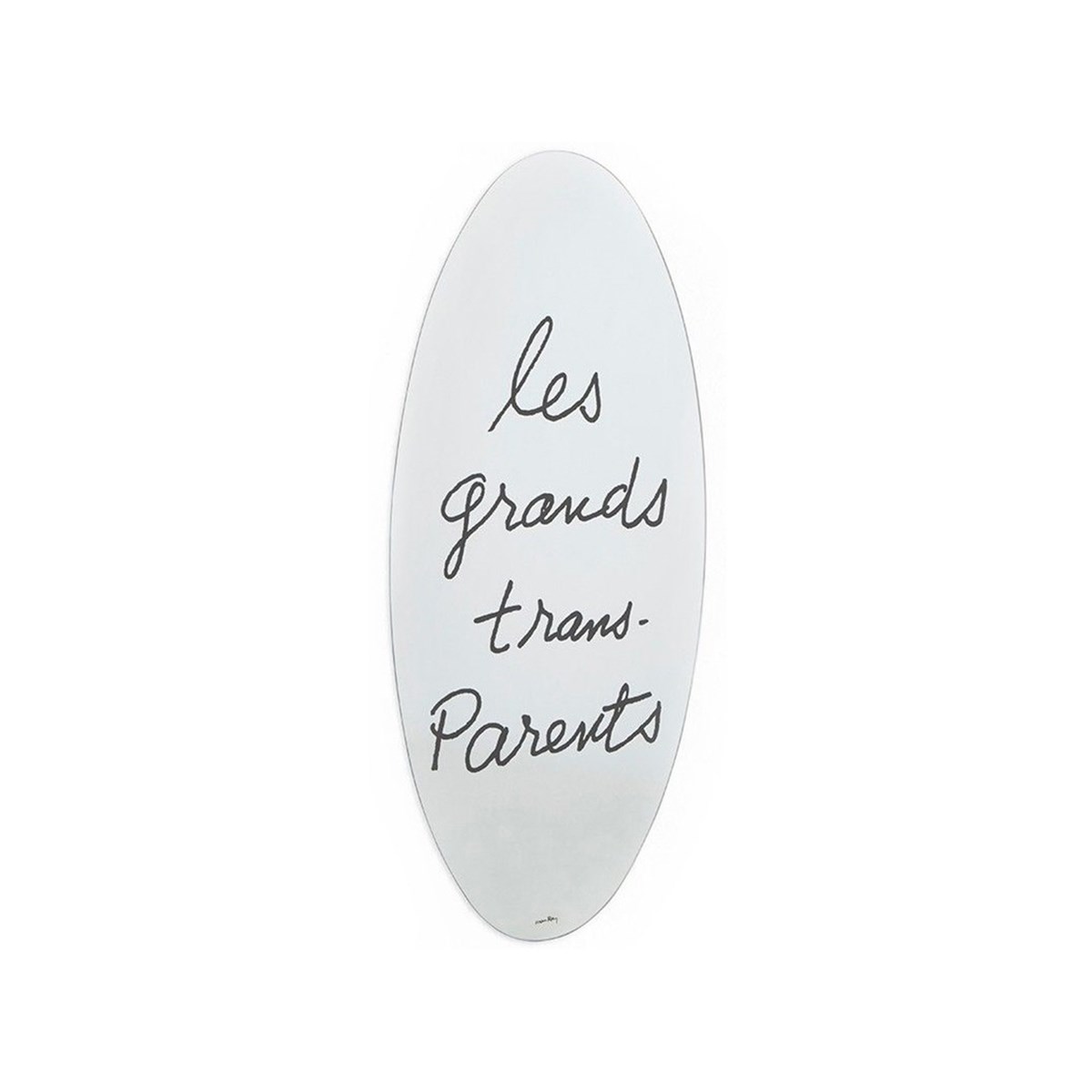-
“I have finally freed myself from the sticky medium of paint, and am working directly with light itself.”
Man Ray was born Emmanuel Radnitzky, in 1922, He remains well known for his images with cameraless-photography, commonly called photograms but which he dubbed “rayographs” in a punning combination of his own name and the word “photograph.”
Man Ray’s artistic beginnings came some years earlier, in the Dada movement. Shaped by the trauma of World War I and the emergence of a modern media culture—epitomized by advancements in communication technologies like radio and cinema—Dada artists shared a profound disillusionment with traditional modes of art making and often turned instead to experimentations with chance and spontaneity. In The Rope Dancer Accompanies Herself with Her Shadows, Man Ray based the large, color-block composition on the random arrangement of scraps of colored paper scattered on the floor. The painting evinces a number of interests that the artist would carry into his photographic work: negative space and shadows; the partial surrender of compositional decisions to accident; and, in its precise, hard-edged application of unmodulated color, the removal of traces of the artist’s hand.
In 1922, six months after he arrived in Paris from New York, Man Ray made his first rayographs. To make them, he placed objects, materials, and sometimes parts of his own or a model's body onto a sheet of photosensitized paper and exposed them to light, creating negative images. This process was not new—camera-less photographic images had been produced since the 1830s—and his experimentation with it roughly coincided with similar trials by Lázló Moholy-Nagy. But in his photograms, Man Ray embraced the possibilities for irrational combinations and chance arrangements of objects, emphasizing the abstraction of images made in this way. He published a selection of these rayographs—including one centered around a comb, another containing a spiral of cut paper, and a third with an architect’s French curve template on its side—in a portfolio titled Champs délicieux in December 1922, with an introduction written by the Dada leader Tristan Tzara. In 1923, with his film Le Retour à la raison (Return to Reason), he extended the rayograph technique to moving images.
-

-
Around the same time, Man Ray’s experiments with photography carried him to the center of the emergent Surrealist movement in Paris. Led by André Breton, Surrealism sought to reveal the uncanny coursing beneath familiar appearances in daily life. Man Ray proved well suited to this in works like Anatomies, in which, through framing and angled light, he transformed a woman’s neck into an unfamiliar, phallic form. He contributed photographs to the three major Surrealist journals throughout the 1920s and 1930s, and also constructed Surrealist objects like Gift, in which he altered a domestic tool (an iron) into an instrument of potential violence, and Indestructible Object (or Object to Be Destroyed), a metronome with a photograph of an eye affixed to its swinging arm, which was destroyed and remade several times.
Working across mediums and historical movements, Man Ray was an integral part of The Museum of Modern Art’s exhibition program early on. His photographs, paintings, drawings, sculptures, films, and even a chess set were included in three landmark early exhibitions: Cubism and Abstract Art (1936); Fantastic Art, Dada, Surrealism (1936–37), for which one of his rayographs served as the catalogue’s cover image; and Photography, 1839–1937 (1937). In 1941, the Museum expanded its collection of his work with a historic gift from James Thrall Soby, an author, collector, and critic (and MoMA trustee) who had, some eight years earlier, acquired an expansive group of Man Ray’s most important photographs directly from the artist. Within this group were 24 first-generation, direct, unique rayographs from the 1920s that speak to Man Ray’s ambition, as he wrote in 1921, to “make my photography automatic—to use my camera as I would a typewriter.”
Search
View All -
{{products.length}} product{{products.length != 1 ? 's' : ''}}
and
{{articles.length}} article{{articles.length != 1 ? 's' : ''}}
No products available.
We don't appear to have any products related to your search term. Please try again.
Cart
Subtotal $0.00
Shipping and discount codes are added at checkout.

